Follow Us x
Plasma Rich in Growth Factor
Plasma Rich in Growth Factor (or PRGF) is a type of plasma rich protein (PRP) that is derived by fractioning blood into its components. PRGF is used primarily in bone and soft tissue regeneration. It is a technique that uses a small amount of the patient's own blood to isolate crucial proteins that stimulate healing, foster new bone growth, and repair soft tissue in surgical sites. And, because PRGF is derived from the patient's own blood and tissue, the process is very safe with no risk of disease transmission or rejection from the donor.
The Excitement About PRGF
PRGF is considered a breakthrough in bone and soft tissue regeneration because it permits the body to take advantage of the normal healing pathways at a greatly accelerated rate. When the body is wounded and needs to heal, many different cells and cell-types are rushed to the site of the injury. These cells initiate the healing process by forming blood clots and releasing growth factors into the wound. The more growth factors that are introduced to the wound, the quicker and more efficiently the body is able to heal.
By introducing PRGF to the surgical area, the body is able to take advantage of a concentrated amount of growth factors. This allows for accelerated healing but without the immune system response of swelling and inflammation. PRGF also has been shown to increase the formation of new bone. By adding PRGF to the surgical site, the doctor can now grow bone and gum tissue more predictably and faster than ever before. This is of great significance when placing dental implants or rebuilding gum support lost through gingival recession.
The Advantages of PRGF
- It is Safe. PRGF are derived from the patient's own blood. As a result, disease transmission is not an issue.
- It is Convenient. PRGF is easily generated in our office and can be done while the patient is undergoing another procedure, such as placement of dental implants.
- It helps with Faster Healing. By saturating the wound with PRGF, the patient will experience faster healing time and improved tissue regeneration.
- It is Cost Effective.Because we are able to generate PRGF in office, the patient need not go through the expense of a harvesting procedure in a hospital or at a blood bank.
- It is Easy to Use. PRGF is easy to handle and makes applying bone substitute materials and bone grafting products easier to manipulate.
FAQ's about PRGF
1. Is PRGF safe?
a. Yes! A very small amount of your own blood is drawn during your appointment. The blood is then placed in a centrifuge and spun down. This helps separate the PRGF from the other contents of your blood (red blood cells, white blood cells, etc.). The entire process takes only about 20 minutes!
2. Can PRGF be used in all bone-grafting cases?
a. Because each patient's needs are different, PRGF is not used in all cases. There are situations in which PRGF is not necessary, for example if there is no infection, if the surgical site was small, or if there are no plans to add an implant in the extraction site. However, for a vast majority of cases, PRGF can greatly benefit the patient by making the wound heal faster and more efficiently. In fact, it is especially helpful for those with decreased healing response (ie: diabetics, smokers, the elderly, or those with immune disorders).
3. Will PRGF be covered by my insurance?
a. Unfortunately, PRGF is not usually covered by insurance providers. The cost of PRGF application is usually paid by the patient. However, since PRGF often stimulates bone growth without bone grafting the cost is more often than not offset by the savings from not having a bone grafting procedure.
4. Are there any contraindications to PRGF?
a. There are a few contraindications to PRGF. Those with bleeding disorders or hematologic diseases do not qualify for this in-office procedure because it can be difficult to control bleeding in a non-hospital setting. It is best to discuss your treatment options with your doctor to determine if you are a candidate for PRGF.
Have Additional Questions? Call Now: (337) 233-0440
Ready to Schedule Your Appointment? Click Here!

